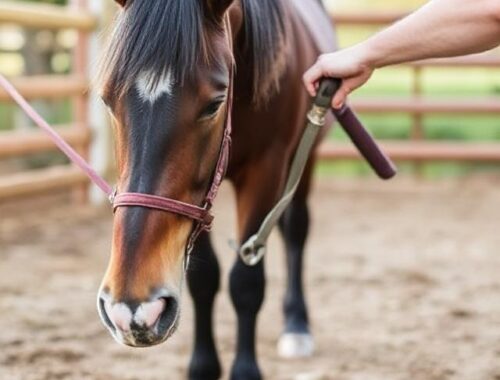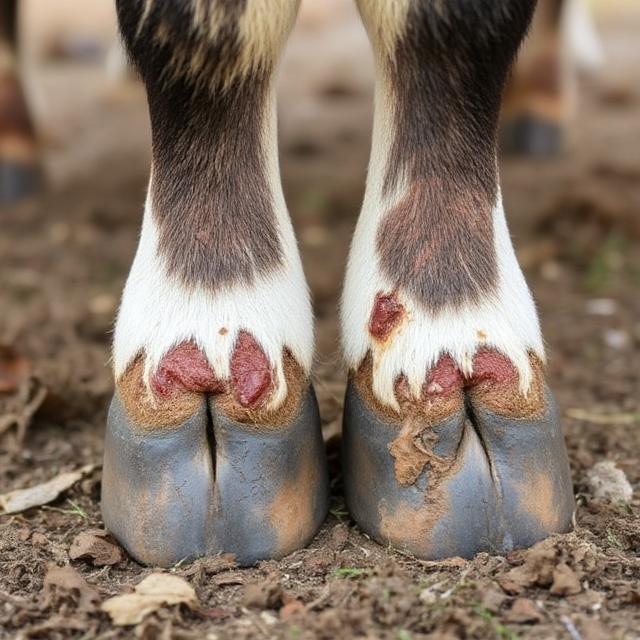
Common Hoof Diseases in Livestock and How to Treat Them
Anyone with livestock knows how important strong hooves are. But let’s be honest, they don’t always get the attention they deserve. Hooves are the foundation your animals stand on—literally. When things go wrong, the ripple effect can hit everything from movement to milk production.
Hoof diseases aren’t just uncomfortable. Left unchecked, they bring on lameness, weight loss, and big vet bills. Luckily, most of them are preventable. All it takes is paying attention, keeping things clean, and knowing what to watch for. This guide covers the most common hoof infections, including hoof rot in goats, digital dermatitis, and thrush in horses. You’ll also get a handle on hoof disease treatment and ways to avoid these issues altogether.
Overview: Why Hoof Health Matters
Strong hooves mean a mobile, productive animal. When disease creeps in, animals slow down, stop grazing, or show signs of pain. Small changes in how they walk or stand could be early signs of hoof disease. Spotting those clues early on can save you a ton of trouble later.
Every day, your animals walk on dirt, rocks, and mud. Without regular checks, common hoof infections can pop up fast. If things go unnoticed, they can snowball into real problems like lameness or joint damage. The goal isn’t just treating hoof diseases when they show up—it’s catching them early and setting your animals up to avoid them in the first place.
Think of it this way: better hoof care means fewer setbacks. That includes more time grazing, better weight gain, stronger breeding performance, and healthier movement overall. Whether you’re raising goats, cows, or horses, a few minutes a day on hoof care makes a real difference.

Top Hoof Diseases by Animal Type
Not every animal is affected the same way. Some diseases tend to show up more often in certain species, and knowing the difference matters. Here’s a quick rundown of what tends to affect each type:
- Cattle often deal with digital dermatitis and foot rot. These are painful and can knock milk production down fast.
- Goats are highly prone to hoof rot. It comes on fast and spreads quickly in wet conditions.
- Horses usually face thrush or white line disease, especially when hooves stay wet too long.
Each case has its own signs. In goats, look for sudden limping or swelling. Cows may shift weight or walk oddly. Horses might flinch when picking out the hooves or show crumbling near the wall.
By learning to spot these signs, you’re more likely to catch issues early. And when you do, the road to recovery gets shorter. Hoof disease treatment works best when started right away—before infections spread or hooves start breaking down.
Whether it’s white line disease in a gelding or digital dermatitis in a dairy cow, each condition needs a different plan. That’s why keeping species-specific hoof care in mind is key.
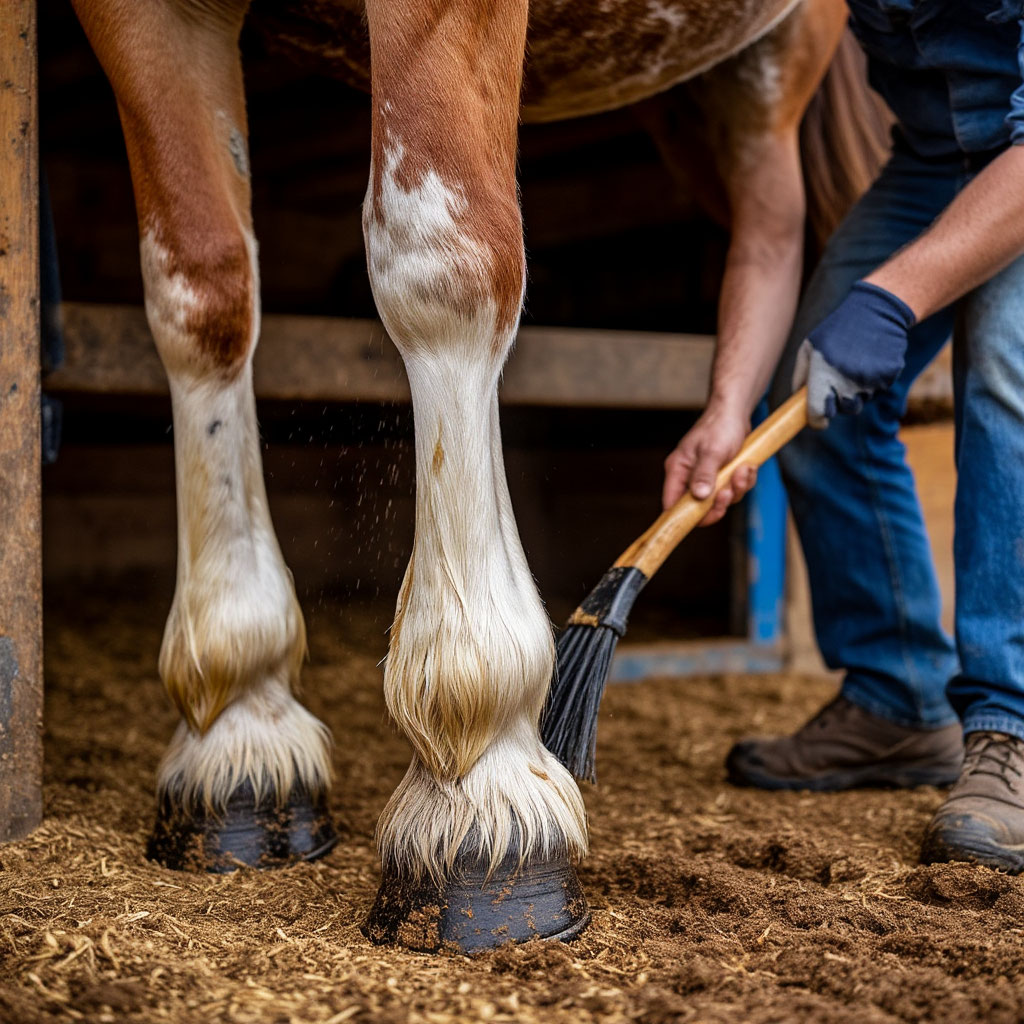
Early Signs of Hoof Infections
Problems don’t always announce themselves loudly. You might see a little heat or notice a hoof that smells off. Maybe an animal hangs back from the group or walks just a little stiff. These small signs are usually the first clue that something’s not right.
Here’s a breakdown of what to watch for:
| Condition | What You Might See | Why It Matters |
|---|---|---|
| Digital dermatitis | Red, raw spots by the heel | Can cause intense pain, limping |
| Hoof rot in goats | Sudden swelling, bad odor | Spreads fast, hurts mobility |
| White line disease | Flaky wall, debris inside | Weakens structure of the hoof |
| Thrush in horses | Black gunk in the frog, foul smell | Signals wet, dirty hoof issues |
| General infections | Warmth, slight limp, irritation | Often missed until it worsens |
Don’t wait for a full-blown limp to take action. If something feels off when you’re cleaning hooves, it probably is. Quick response keeps things manageable. Hoof disease treatment is a lot more effective when started during those early stages.
When to Contact a Veterinarian
If an animal isn’t improving after a few days, or the hoof looks worse, that’s your sign to bring in a pro. Also, if the infection looks like it’s spreading or the animal can’t put weight on the leg, don’t wait. A vet can offer pain relief, prescription meds, and help you come up with a treatment plan. Waiting too long can make even a small issue harder to fix—and more expensive, too.
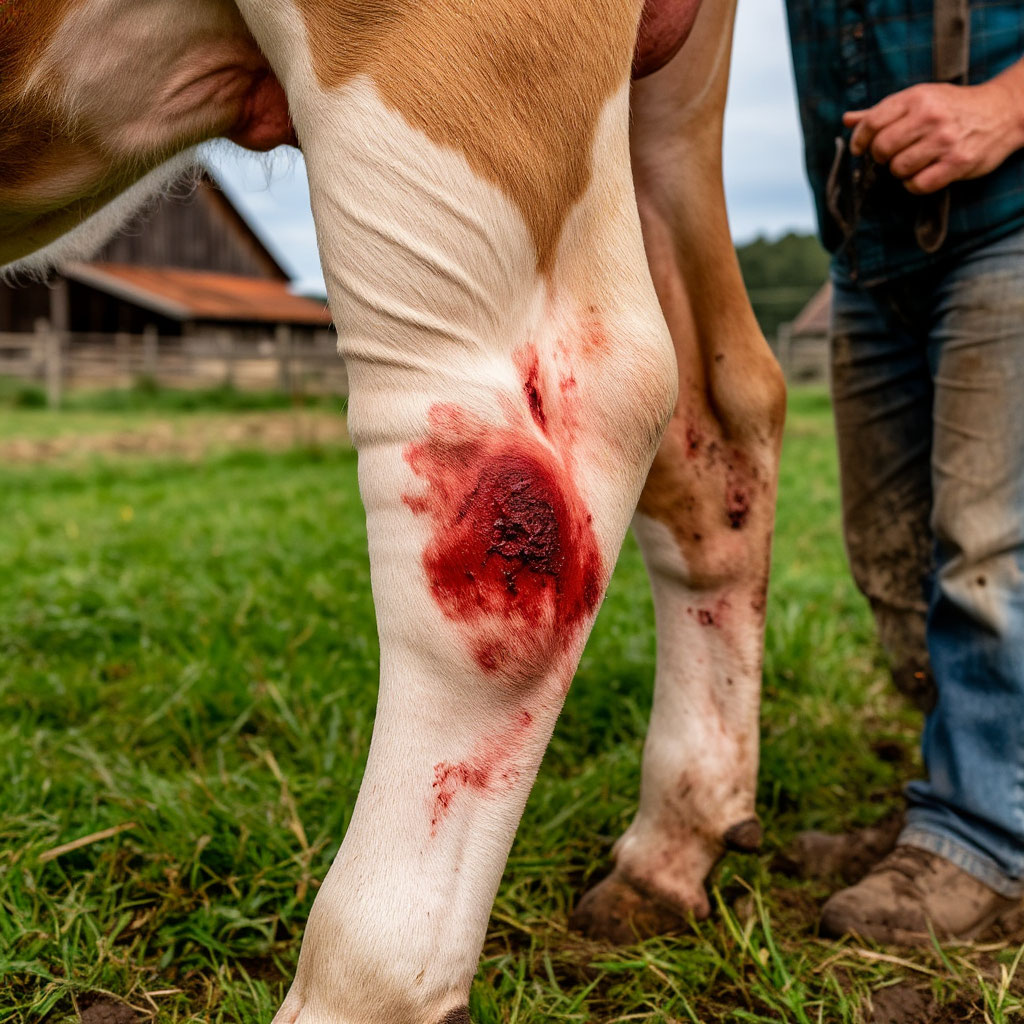
Causes and Risk Factors
Most hoof problems don’t just pop up for no reason. There are usually a few key things working against you. Here’s what causes the most trouble:
- Wet, messy pastures or stalls let bacteria thrive.
- Skipping trims leads to overgrowth and cracks.
- Not checking hooves often enough lets little issues grow into big ones.
If your animals are standing in mud, their hooves stay soft—and that’s when bacteria move in. Once infections get going, they’re tough to beat. Hoof rot in goats is a perfect example. The drier and cleaner the living area, the lower the risk.
The same goes for trimming. Long, cracked hooves trap moisture and dirt. That’s a recipe for white line disease. When hooves are trimmed evenly and often, problems stay away.
Daily checks don’t have to take long. Even a quick look helps you catch signs early. That five-minute habit can save weeks of treatment down the road.
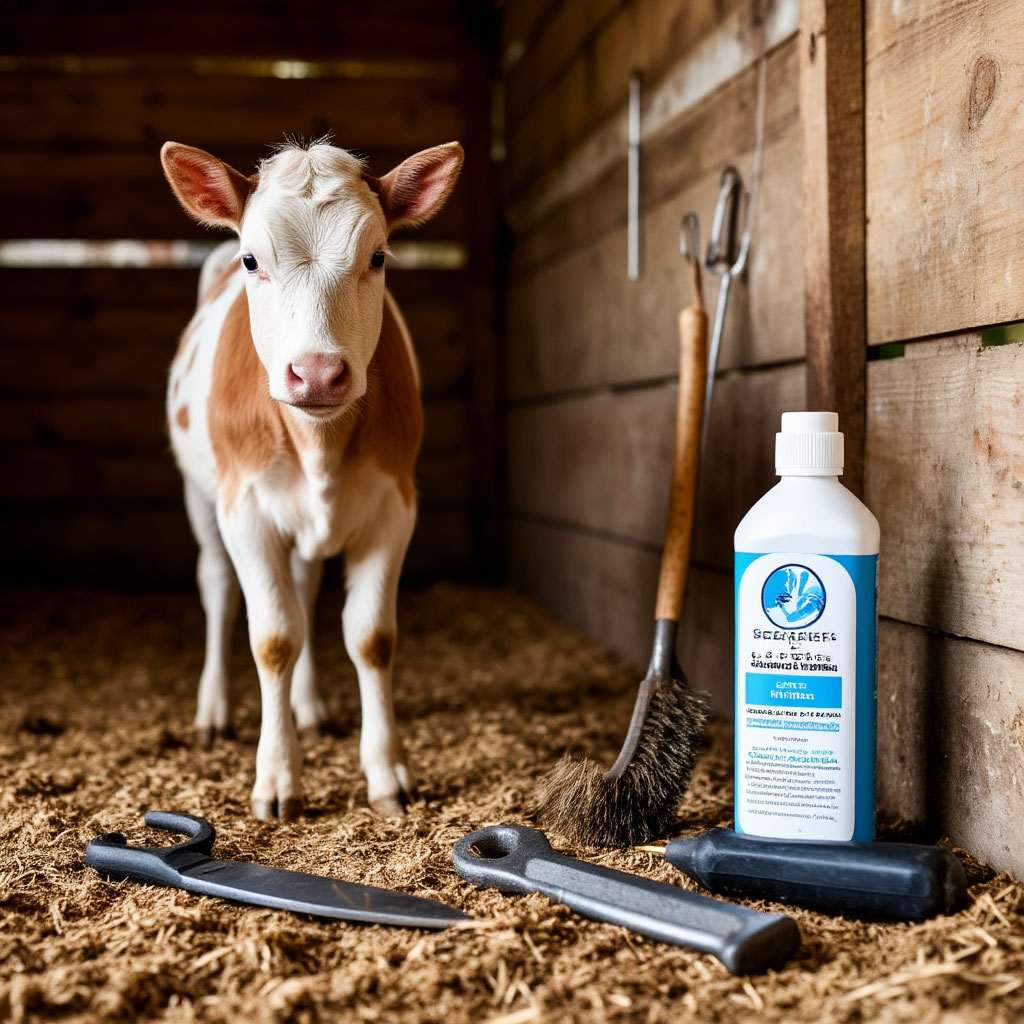
Treatment Options for Common Hoof Diseases
When trouble shows up, you’ve got to act fast. Step one is cleaning. Always start by picking out the hoof and scrubbing off dirt or debris. After that, look for anything soft, foul-smelling, or cracked.
If there’s infected tissue, trim away the worst parts. Then apply whatever your vet or local supply store recommends—like copper sulfate soaks or antifungal spray. Keep the animal somewhere dry and bedded. If it’s a contagious case like digital dermatitis, separate them until things clear up.
Some infections will clear with basic care. Others need a vet’s help and a prescription. Either way, the sooner you start treatment, the better. Most hoof diseases won’t fix themselves. Delaying care just makes it harder for the animal to heal.
How to Prevent Recurring Hoof Issues
Once you’ve dealt with a hoof problem, the goal is keeping it from coming back. Start with regular cleaning. That means picking out hooves and checking for heat, smell, or swelling.
Keep bedding dry. Avoid letting animals stand in wet spots. Good footing and airflow make a big difference. Then, make trimming part of your calendar—monthly or quarterly depending on how fast your animals’ hooves grow.
Food matters too. A proper diet helps hooves grow strong. Mineral deficiencies, especially in zinc or biotin, can weaken hoof walls.
If you’ve already had issues like thrush in horses or hoof rot in goats, step up your routine. Once an animal has been sick, their hooves may be more vulnerable. Keep records of flare-ups and talk to your vet if you see repeat cases.
Taking care of hooves isn’t flashy, but it’s one of the most important things you can do for your livestock. From thrush in horses to digital dermatitis in cows, or hoof rot in goats, hoof diseases are everywhere—but they don’t have to be a problem if you stay ahead of them.
Keep things clean, dry, and trimmed. Watch for early signs. And don’t hesitate to call the vet if something doesn’t feel right.
Those small, consistent steps you take every day? They keep your animals walking, grazing, and thriving—just the way they should.
You May Also Like
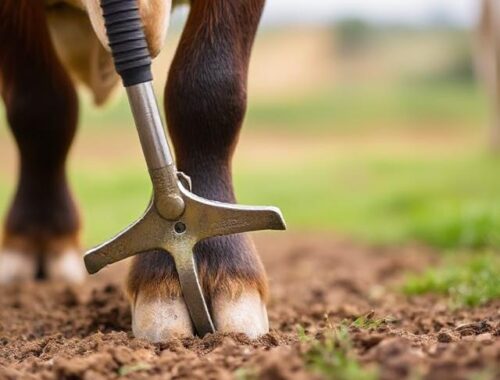
Best Hoof Care Tools for Livestock Owners: A Practical Buying Guide
June 26, 2025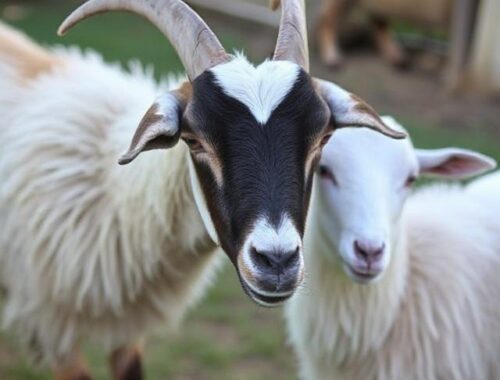
How to Spot Early Signs of Hoof Problems in Goats and Sheep
June 26, 2025